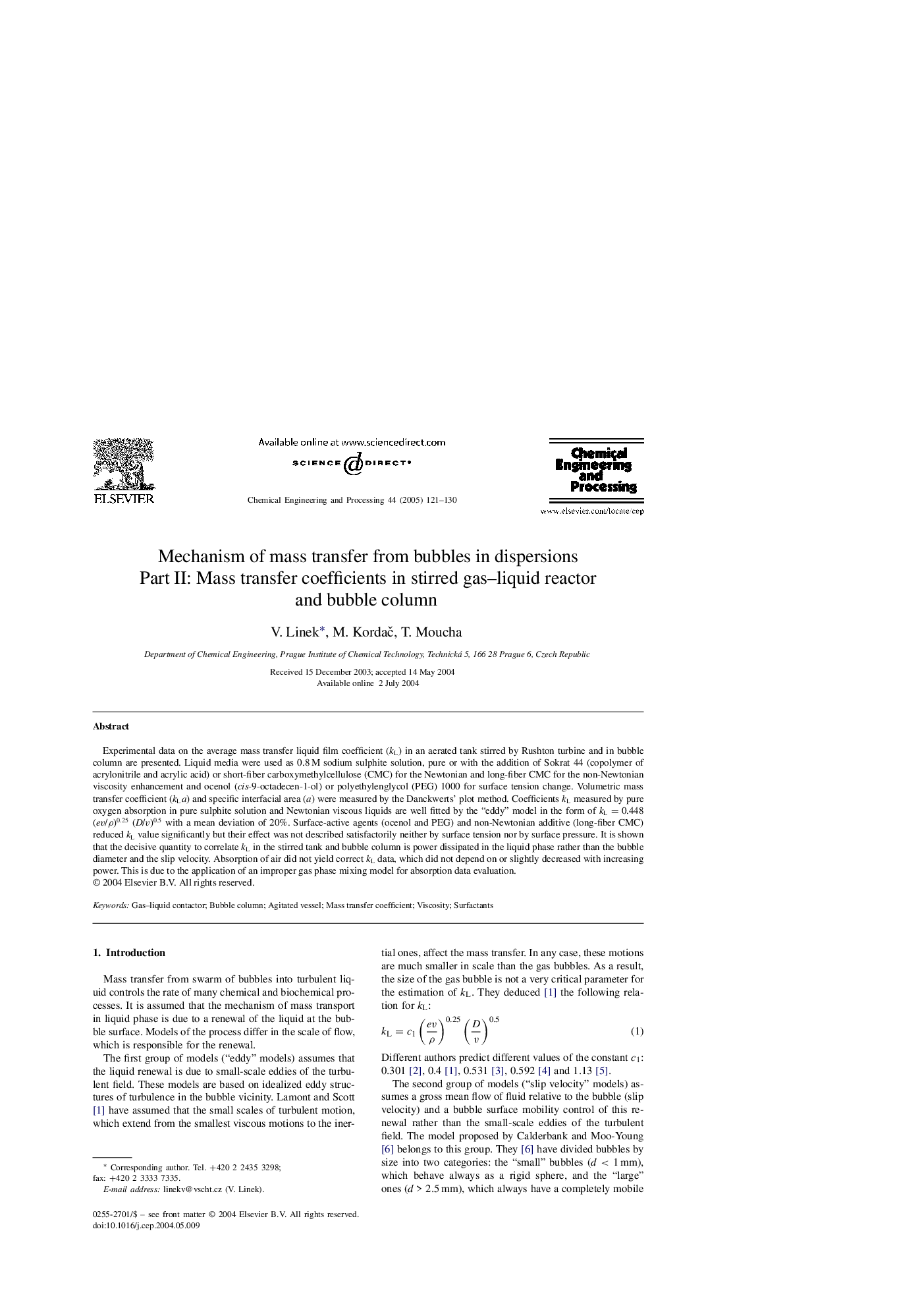| کد مقاله | کد نشریه | سال انتشار | مقاله انگلیسی | نسخه تمام متن |
|---|---|---|---|---|
| 10396979 | 889341 | 2005 | 10 صفحه PDF | دانلود رایگان |
عنوان انگلیسی مقاله ISI
Mechanism of mass transfer from bubbles in dispersions
دانلود مقاله + سفارش ترجمه
دانلود مقاله ISI انگلیسی
رایگان برای ایرانیان
کلمات کلیدی
موضوعات مرتبط
مهندسی و علوم پایه
مهندسی شیمی
تکنولوژی و شیمی فرآیندی
پیش نمایش صفحه اول مقاله

چکیده انگلیسی
Experimental data on the average mass transfer liquid film coefficient (kL) in an aerated tank stirred by Rushton turbine and in bubble column are presented. Liquid media were used as 0.8Â M sodium sulphite solution, pure or with the addition of Sokrat 44 (copolymer of acrylonitrile and acrylic acid) or short-fiber carboxymethylcellulose (CMC) for the Newtonian and long-fiber CMC for the non-Newtonian viscosity enhancement and ocenol (cis-9-octadecen-1-ol) or polyethylenglycol (PEG) 1000 for surface tension change. Volumetric mass transfer coefficient (kLa) and specific interfacial area (a) were measured by the Danckwerts' plot method. Coefficients kL measured by pure oxygen absorption in pure sulphite solution and Newtonian viscous liquids are well fitted by the “eddy” model in the form of kL = 0.448 (ev/Ï)0.25 (D/v)0.5 with a mean deviation of 20%. Surface-active agents (ocenol and PEG) and non-Newtonian additive (long-fiber CMC) reduced kL value significantly but their effect was not described satisfactorily neither by surface tension nor by surface pressure. It is shown that the decisive quantity to correlate kL in the stirred tank and bubble column is power dissipated in the liquid phase rather than the bubble diameter and the slip velocity. Absorption of air did not yield correct kL data, which did not depend on or slightly decreased with increasing power. This is due to the application of an improper gas phase mixing model for absorption data evaluation.
ناشر
Database: Elsevier - ScienceDirect (ساینس دایرکت)
Journal: Chemical Engineering and Processing: Process Intensification - Volume 44, Issue 1, January 2005, Pages 121-130
Journal: Chemical Engineering and Processing: Process Intensification - Volume 44, Issue 1, January 2005, Pages 121-130
نویسندگان
V. Linek, M. KordaÄ, T. Moucha,